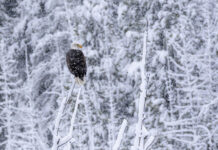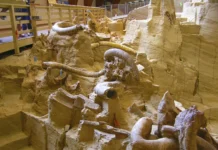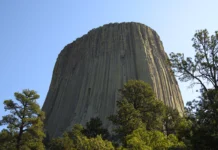| OREGON |
Story & Photography by: Hawk Buckman
The first thing you notice when you arrive in Cannon Beach isn’t the scent of salt air or the crash of the surf—it’s the towering silhouette of Haystack Rock, rising 235 feet from the Pacific like a fortress of stone. As the tide retreats, the base reveals itself, ringed by tidepools glittering with anemones and starfish. Seabirds wheel above, their cries mixing with the wind, and for a moment, it feels as if time has stopped.
Haystack Rock, a 235-foot sea stack in Cannon Beach, Oregon, stands as a testament to the region’s rich geological and ecological heritage. Formed approximately 15 to 17 million years ago through volcanic lava flows, this iconic monolith is part of the Oregon Islands National Wildlife Refuge. It serves as a vital nesting site for various seabird species, including the Tufted Puffin, and is surrounded by tide pools teeming with marine life such as starfish, sea anemones, and crabs.
Accessible by foot during low tide, Haystack Rock offers visitors a unique opportunity to explore its natural wonders up close. Recognized for its striking beauty, it has also been featured in several films, adding to its cultural significance. Whether you’re a nature enthusiast, photographer, or film buff, Haystack Rock provides a captivating experience that showcases the timeless allure of Oregon’s coast.
Seventeen million years ago, long before the Oregon Coast took its modern form, lava from massive volcanic eruptions in what is now eastern Oregon surged westward. The molten rivers carved through ancient landscapes, traveled down the Columbia River corridor, and met the sea. Here, they cooled into basalt—dense, unyielding, and destined to outlast almost everything around it.
Over the ages, the Pacific Ocean chiseled away at the softer rock, leaving Haystack Rock standing as a solitary sea stack, a natural monument to the slow artistry of erosion.
| CLATSOP & TILLAMOOK
For thousands of years, the Clatsop and Tillamook peoples lived along this stretch of the coast. The beach was their hunting ground, fishing spot, and gathering place. Oral histories tell of the sea’s bounty and the dangers of the tides. While there are no written records tying Haystack Rock to specific legends, its commanding presence would have made it a natural landmark for generations navigating the shifting coastline.
The town itself owes its name to a maritime disaster. In 1846, the U.S. Navy schooner Shark wrecked on the treacherous Columbia River Bar. Years later, one of its cannons washed ashore near Arch Cape. When the fledgling settlement—originally called Elk Creek—sought a more distinctive identity in 1922, Cannon Beach was born in honor of that relic of the sea.
By the early 20th century, word of this stunning shoreline began to spread. The construction of the Coast Highway in the 1920s and ’30s brought a wave of visitors from Portland and beyond. They came for the broad beaches, the briny air, and the ever-present view of Haystack Rock keeping watch offshore.
Today, the rock is more than a photo backdrop—it’s part of the Oregon Islands National Wildlife Refuge and a Marine Garden, home to nesting puffins, cormorants, and the kaleidoscopic life of the tidepools.
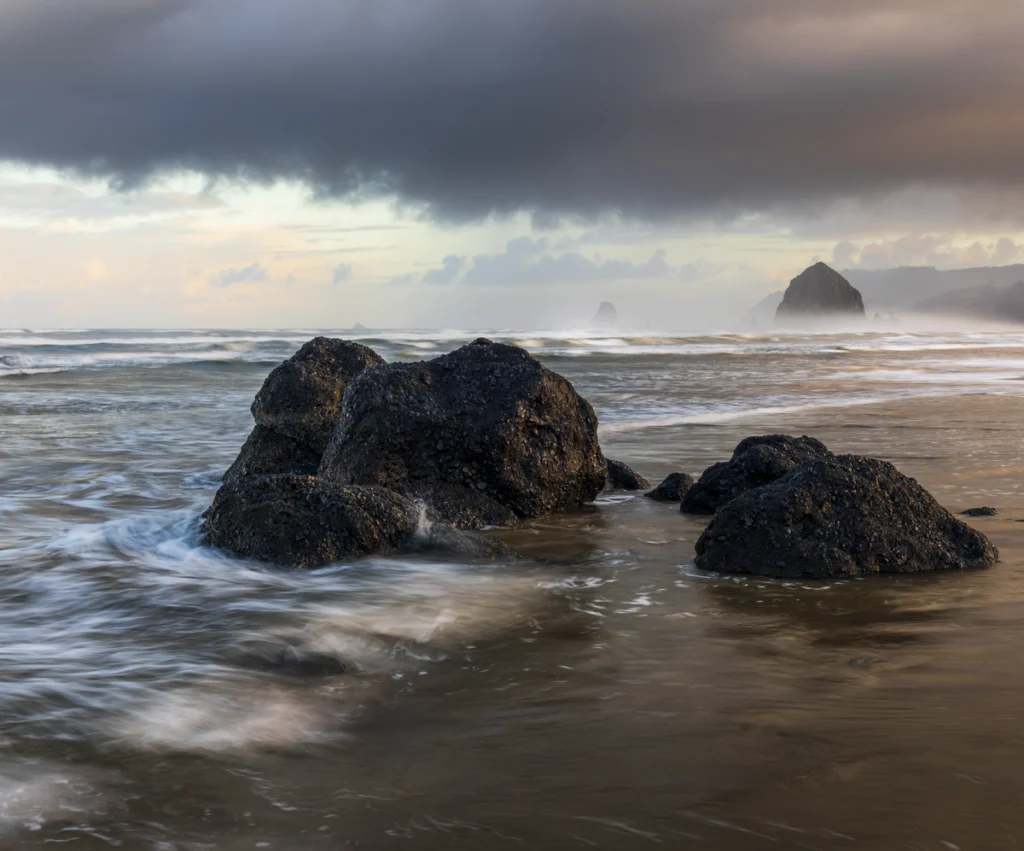
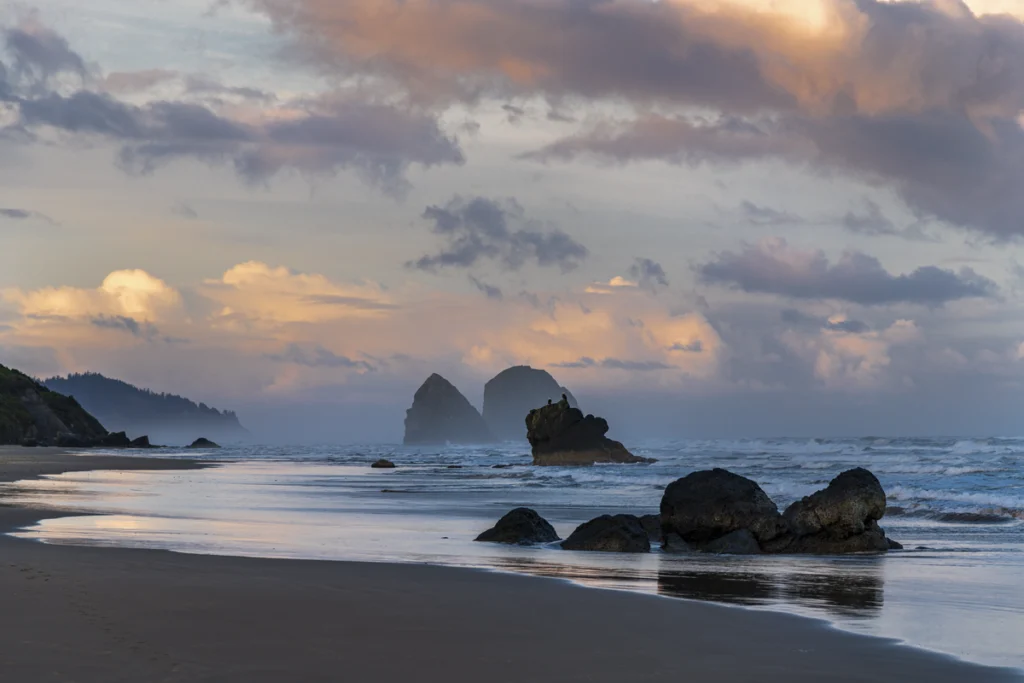
In summer, the streets of Cannon Beach hum with activity. Art galleries spill onto sidewalks, cafés serve clam chowder in steaming bread bowls, and visitors stroll down to the sand as the sun dips low. The annual Sandcastle Contest—a tradition since the 1960s—draws competitors who sculpt elaborate kingdoms that the tide inevitably claims.
Yet even in the busiest season, when the beach is dotted with umbrellas and kites, there’s a moment when you can stand in the shadow of Haystack Rock and feel the same awe that people have felt for centuries. The air tastes of salt, the waves roll endlessly in, and the basalt giant keeps its quiet vigil.
Because here on the Oregon Coast, Haystack Rock isn’t just a landmark. It’s a reminder that nature works on a clock far older—and far more patient—than our own.
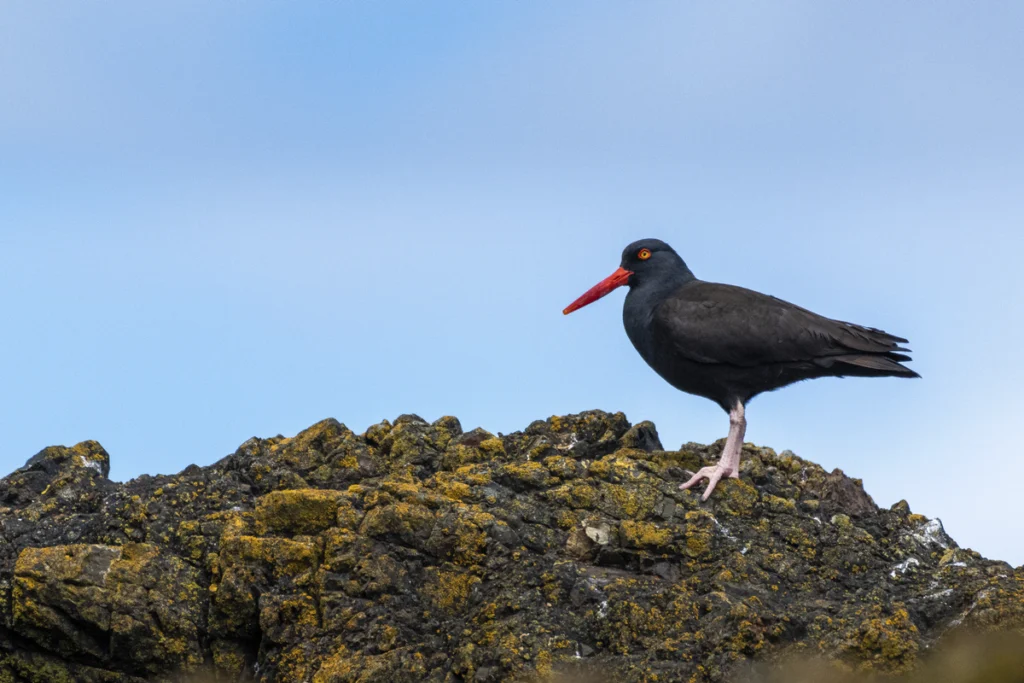
| MORE HISTORY
Haystack Rock is an igneous sea stack formed from lava flows that originated in eastern Oregon and Washington during the Miocene era—roughly 15 to 17 million years ago. These colossal basalt flows traveled hundreds of miles down the ancient Columbia River Gorge, eventually reaching the coast. Over millions of years, the softer surrounding rock eroded away, leaving behind this hard basalt pillar.
Its current form is the result of coastal erosion and the slow retreat of Oregon’s shoreline. Today, Haystack Rock serves as a refuge for nesting seabirds, including tufted puffins, and is part of the Oregon Islands National Wildlife Refuge. The intertidal area at its base is protected as a Marine Garden, where visitors can explore tidepools teeming with starfish, anemones, crabs, and other marine life.
| CANNON BEACH
The modern name Cannon Beach comes from a U.S. Navy cannon that washed ashore in the late 1800s. In 1846, the Navy schooner Shark wrecked while crossing the Columbia River Bar. One of its cannons eventually drifted south and was discovered near Arch Cape in 1898. The town, originally known as Elk Creek, was renamed Cannon Beach in 1922 to commemorate the find. Cannon Beach itself was first developed as a summer retreat for inland Oregonians in the early 20th century. The construction of highways in the 1920s and ’30s brought more visitors, cementing its role as a popular coastal getaway.
| REFERENCES
- “Haystack Rock” – Wikipedia article detailing its age (15–17 million years), geology, ecology, and protections as a Marine Garden and part of the Oregon Islands National Wildlife Refuge
- “Haystack Rock | Explore the Coast of Cannon Beach, OR” – Visitor-oriented overview of Haystack Rock’s height, marine life, geology, and cultural presence
- “Haystack Rock at the Oregon Islands National Wildlife Refuge” – National Park Service details on the refuge’s history, wildlife, and early Lewis & Clark expedition connections
- Haystack Rock Awareness Program history – Timeline of incorporation, refuge designation, wilderness status, and awareness programs
- “Cannon Beach, Oregon” – Wikipedia article covering town history, name origin related to the cannon, the annual sandcastle contest, and movie appearances





